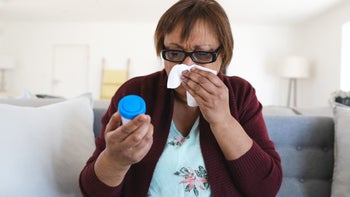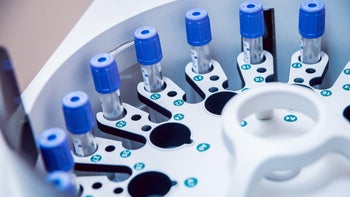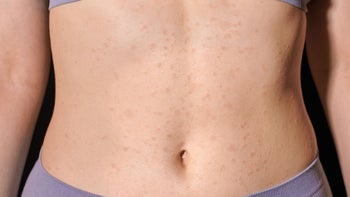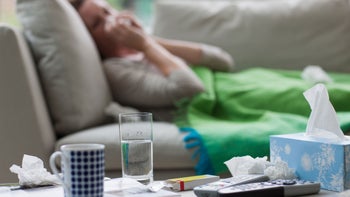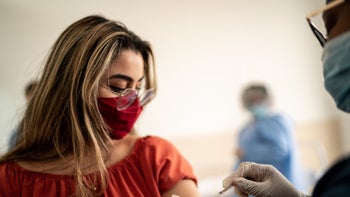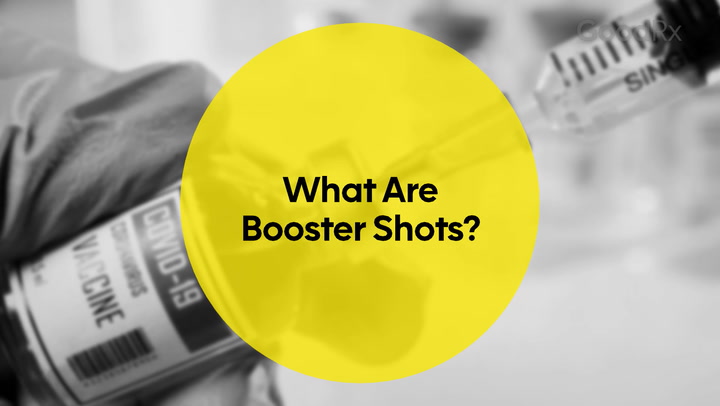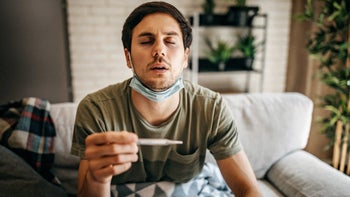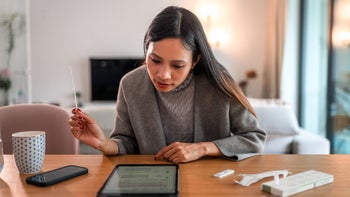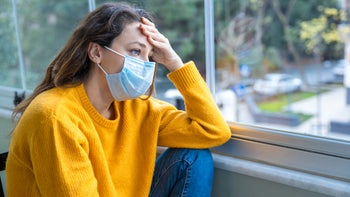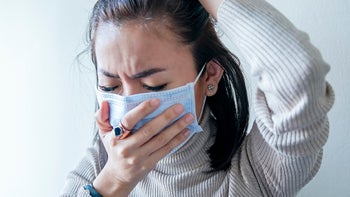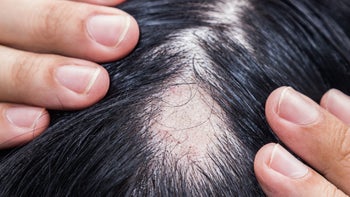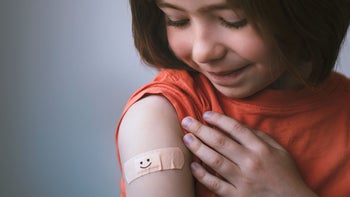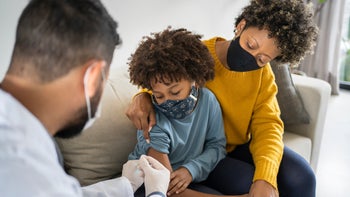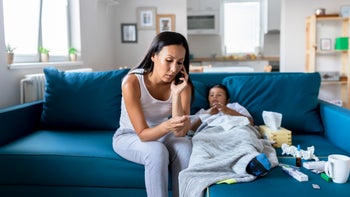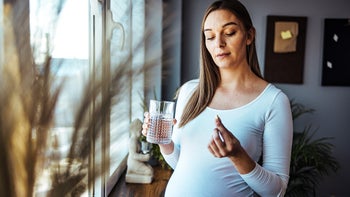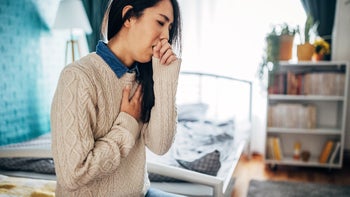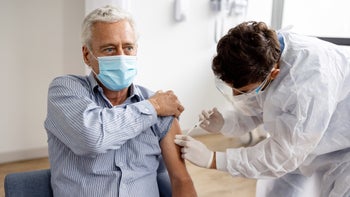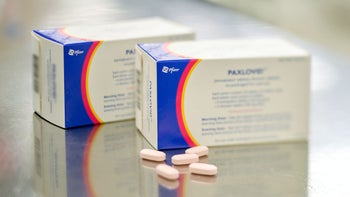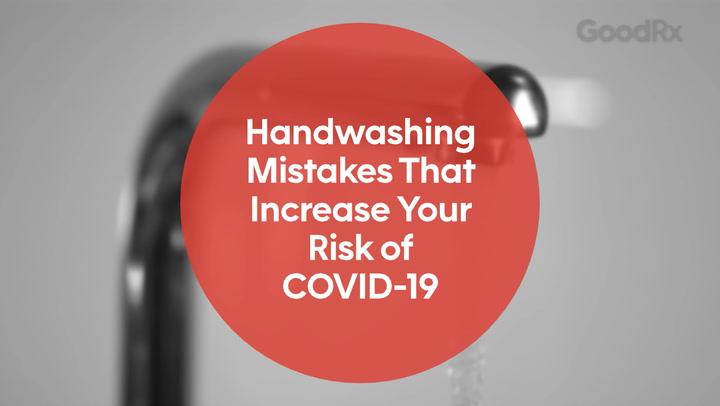
Is Paxlovid Rebound Real? What to Do If COVID-19 Symptoms Return After Taking Medication
Key takeaways:
Paxlovid (nirmatrelvir / ritonavir) is an oral antiviral FDA approved to treat mild to moderate COVID-19 in certain people.
After finishing a course of Paxlovid, some people get better and then start having symptoms again. This has been referred to as “Paxlovid rebound.”
Rebound COVID symptoms are not a side effect of Paxlovid. This return of symptoms is also possible with other COVID treatments and is more common in people who received no treatment in the first place.
COVID rebound symptoms after taking Paxlovid are typically mild and last for about a week for many people. There have been no reported hospitalizations or deaths due to COVID rebound.
Access savings to related medications
Table of contents
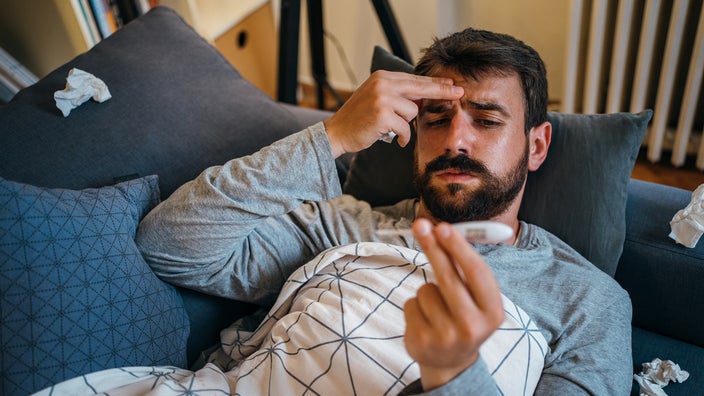
When it was first FDA authorized, Paxlovid (nirmatrelvir / ritonavir) was considered a game changer for treating COVID-19. With a 5-day course of this antiviral combination, people were feeling better and testing negative sooner than they would have without it. But after it became more readily available, a new term grew in popularity: Paxlovid rebound.
“Paxlovid rebound” has been coined to describe the return of COVID symptoms after a person has finished the medication. But even so, Paxlovid is still considered the first-choice medication for people at a high risk of developing severe COVID. So, is Paxlovid rebound a real side effect of the medication? In short, no. Let’s discuss more about these rebound symptoms and what to do if they happen to you.
What is considered a Paxlovid rebound?
The term “Paxlovid rebound” isn’t an official medical diagnosis. But it has come to describe a return of COVID symptoms after an individual has finished a 5-day course of Paxlovid.
According to the CDC, this return of symptoms happens between 2 and 8 days after you initially recover. It could also be marked by a positive COVID test 2 to 8 days after receiving a negative test.
How long does COVID rebound last, and is it worse than the previous infection?
COVID rebound after taking Paxlovid likely only lasts a few days, but research on the subject is limited. In December 2023, the CDC reported that COVID rebound lasted for roughly 7 days in studies. But these studies were very small. More research is needed to confirm this information.
COVID rebound after Paxlovid is typically mild. No hospitalizations or death due to rebound have been reported since the phenomenon first came to light.
How common is COVID rebound after finishing Paxlovid?
When Paxlovid was first granted emergency use authorization (EUA), Pfizer (Paxlovid’s manufacturer) reported that cases of COVID rebound happened to between 1% and 2% of people taking Paxlovid. These rates were similar to people who took a placebo (a pill with no medication in it) during clinical trials.
Data released in March 2023 shows COVID rebound after Paxlovid may happen more often. Study results that Pfizer shared with the FDA suggest that rebound symptoms happened to between 10% and 16% of people taking Paxlovid. Rebound rates were about the same both before and after the Omicron variant became the predominant COVID variant.
A small, observational study from November 2023 found that about 1 in 5 people who had taken Paxlovid tested positive for COVID following a prior negative result. But researchers noted that many of them didn’t experience rebound symptoms. Keep in mind a positive test with or without symptoms is considered a form of COVID rebound.
Is COVID rebound contagious?
Yes, COVID rebound after Paxlovid is likely contagious — even if it’s not causing symptoms. Getting a positive COVID test result means the COVID virus is present in your body. And you can transmit the virus to others.
Does Paxlovid cause COVID rebound?
No, current data shows that Paxlovid doesn’t cause COVID rebound. This return of symptoms is likely just how some people’s immune systems fight and recover from the infection.
In an exclusive interview with GoodRx Health, Christina Madison, PharmD, founder and CEO of The Public Health Pharmacist, discussed why rebound symptoms seem to occur.
“COVID-19 rebound symptoms have occurred in both treated and untreated individuals,” said Madison. “The rebound effects that have been experienced by [people] who have taken Paxlovid seem to be based on how the body immune system responds to the infection, the ability of the medication to get to affected tissues, and viral reservoirs — and [it] is not considered a side effect of the medication.”
COVID rebound doesn’t only happen after taking Paxlovid either. A study of over 12,500 adults suggests that it also happens after treatment with molnupiravir (Lagevrio), another oral antiviral authorized for COVID. But because Paxlovid is the first-choice treatment for mild to moderate COVID, this phenomenon has been dubbed “Paxlovid rebound” by many news outlets.
What are the symptoms of COVID rebound after taking Paxlovid?
Like COVID symptoms, the symptoms of rebound after taking Paxlovid may vary between people. But typically, your initial COVID symptoms will get better (or even go away) while taking Paxlovid. Then between 2 and 8 days after finishing the medication, your symptoms will get worse again.
COVID rebound symptoms you might experience could include:
Muscle aches
Fever or feeling feverish
Cough
Fatigue
Stuffy or runny nose
Sore throat
Chills
As discussed above, COVID rebound can also mean you had a negative COVID test after finishing Paxlovid, followed by a positive test 2 to 8 days after your last dose. It’s possible to have a positive test and no symptoms.
Who’s at risk for COVID rebound after taking Paxlovid?
Researchers are still trying to determine if some people have a higher risk of COVID rebound after taking Paxlovid than others. A clinical trial was conducted to see if COVID rebound rates are higher for people with weakened immune systems. The study is complete, but results haven’t been published yet.
A 2022 preprint study noticed some trends in people who experienced rebound symptoms after taking Paxlovid. Keep in mind more research is needed to verify if these are true risk factors. Study authors noted the following characteristics were seen more with COVID rebound cases:
People with medical conditions that raise the risk of severe COVID illness
People who had organ transplants
People who smoke
People who take medications that weaken the immune system
What should you do if you have a COVID rebound after taking Paxlovid?
If you experience COVID rebound after taking Paxlovid, it’s important to isolate yourself to avoid getting others sick. Stay home for at least 5 days. After that, continue to wear a mask around others for another 5 days. Your first day of rebound symptoms would be considered “Day 0.”
If you live with other people, take steps to isolate from them as much as possible:
Wear a well-fitting mask if you can’t avoid being around others.
Sleep in a separate room if possible.
Use a separate bathroom if available.
Avoid contact with other people and pets in your house.
Avoid sharing household items, such as utensils and towels.
It’s also a good idea to report your case of rebound to Pfizer. This can help them continue to track and study how often it happens.
How do you treat rebound COVID symptoms after taking Paxlovid?
There are no specific CDC recommendations on what to take for rebound COVID symptoms. Over-the-counter cold medications, like NyQuil and Theraflu, can help lessen certain symptoms for some people. But these medications won’t kill the virus that causes COVID.
If your symptoms become severe, you should contact your healthcare provider or seek medical attention. They may suggest other medications based on your situation and medical history.
Should you take Paxlovid again if you experience COVID rebound?
No. At this time, taking Paxlovid again for rebound symptoms isn’t recommended by the CDC or FDA. Additionally, the CDC doesn’t recommend taking other COVID treatments, like molnupiravir, to treat rebound symptoms. However, an ongoing clinical trial is underway to explore if a second round of Paxlovid is effective for rebound symptoms.
Can you have COVID rebound without Paxlovid?
Yes, it’s possible to experience COVID rebound even if you took no medications. Pfizer’s studies have found that rebound rates were similar for people taking Paxlovid and a placebo. But other studies have reported that COVID rebound happened to about 30% of people who received no treatment.
The bottom line
Paxlovid rebound is a term used to describe when a person experiences worsening of COVID symptoms after initially getting better after taking Paxlovid (nirmatrelvir / ritonavir). But COVID rebound isn’t a side effect of Paxlovid. It can happen to people taking any COVID treatment, as well as to people who received no treatment at all.
COVID rebound tends to happen between 2 to 8 days after a person’s last dose of Paxlovid or other COVID treatments. Current research suggests COVID rebound is mild and lasts roughly a week.
Experts aren’t sure yet who’s at greatest risk for COVID rebound after finishing Paxlovid. Rebound COVID is contagious, so you should isolate yourself if it happens to you. Taking another course of Paxlovid isn’t recommended to treat rebound symptoms. If your symptoms become severe, contact your healthcare provider to discuss next steps.
References
Centers for Disease Control and Prevention. (2022). COVID-19 rebound after Paxlovid treatment.
Centers for Disease Control and Prevention. (2023). Isolation and precautions for people with COVID-19.
Centers for Disease Control and Prevention. (2023). SARS-CoV-2 rebound with and without use of COVID-19 oral antivirals.
Edelstein, G. E., et al. (2023). SARS-CoV-2 virologic rebound with nirmatrelvir–ritonavir therapy. Annals of Internal Medicine.
Mast, J. (2022). As reports of ‘Paxlovid rebound’ increase, Covid researchers scramble for answers. Stat News.
National Institutes of Health. (2023). Therapeutic management of nonhospitalized adults with COVID-19.
Pfizer. (n.d.). Pfizer COVID-19 treatment adverse event report.
Pfizer. (2023). A study to learn about a repeat 5-day treatment with the study medicines (called nirmatrelvir/ritonavir) in people 12 years old or older with return of COVID-19 symptoms and SARS-CoV-2 positivity after finishing treatment with nirmatrelvir/ritonavir. Clinicaltrials.gov.
Pfizer. (2023). A study to learn about the study medicines (nirmatrelvir plus ritonavir) in people aged 12 years or older with COVID-19 and a compromised immune system. Clinicaltrials.gov.
Pfizer Laboratories Division, Pfizer Inc. (2023). Paxlovid - nirmatrelvir and ritonavir [package insert].
Smith, D. M., et al. (2022). Recurrence of symptoms following a 2-day symptom free period in patients with COVID-19.
U.S. Food and Drug Administration. (2022). FDA updates on Paxlovid for health care providers.
U.S. Food and Drug Administration. (2023). Meeting of the Antimicrobial Drugs Advisory Committee.
Wang, L., et al. (2022). COVID-19 rebound after Paxlovid and Molnupiravir during January-June 2022. Preprint.
Wong, G. L. H., et al. (2022). Incidence of viral rebound after treatment with nirmatrelvir-ritonavir and molnupiravir. JAMA.


